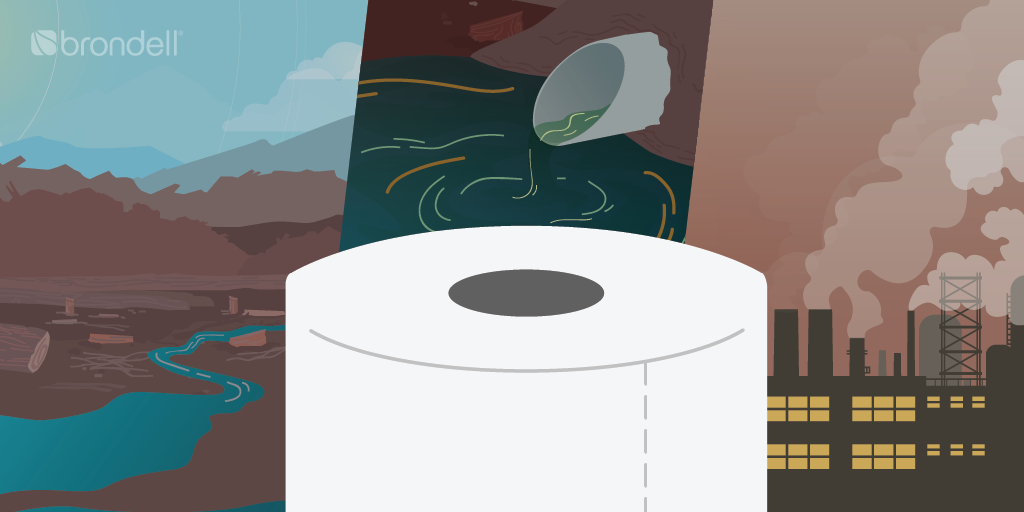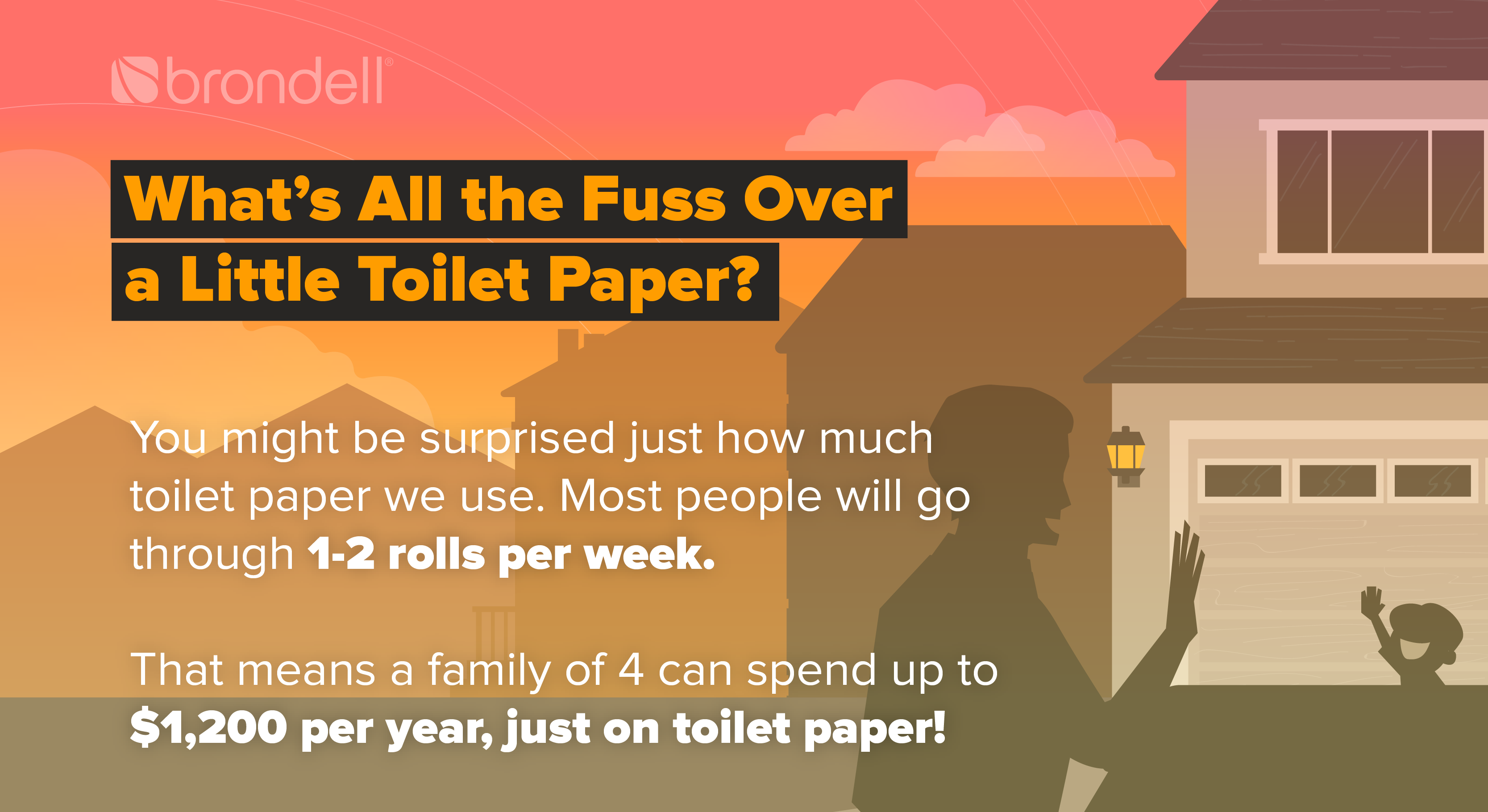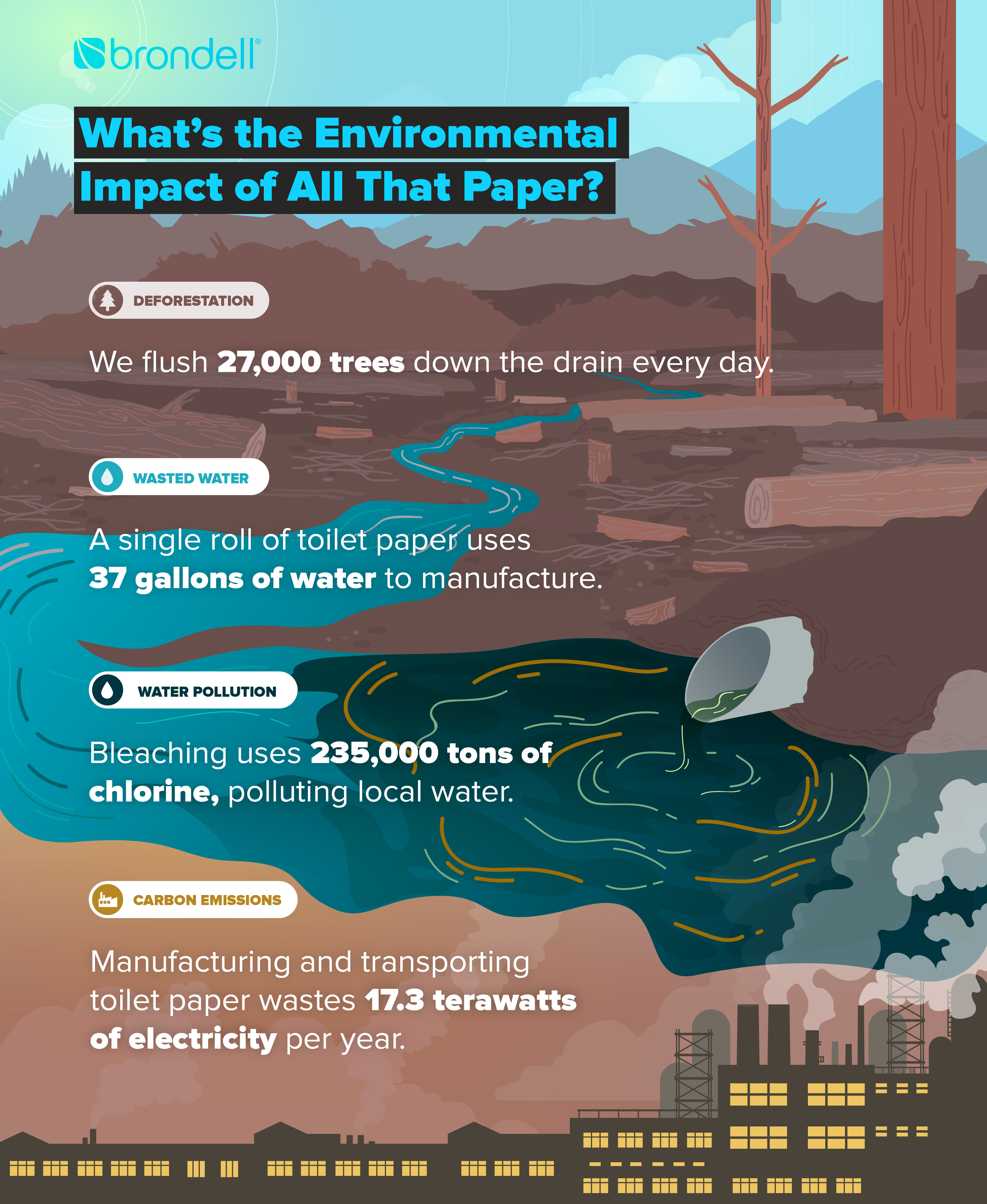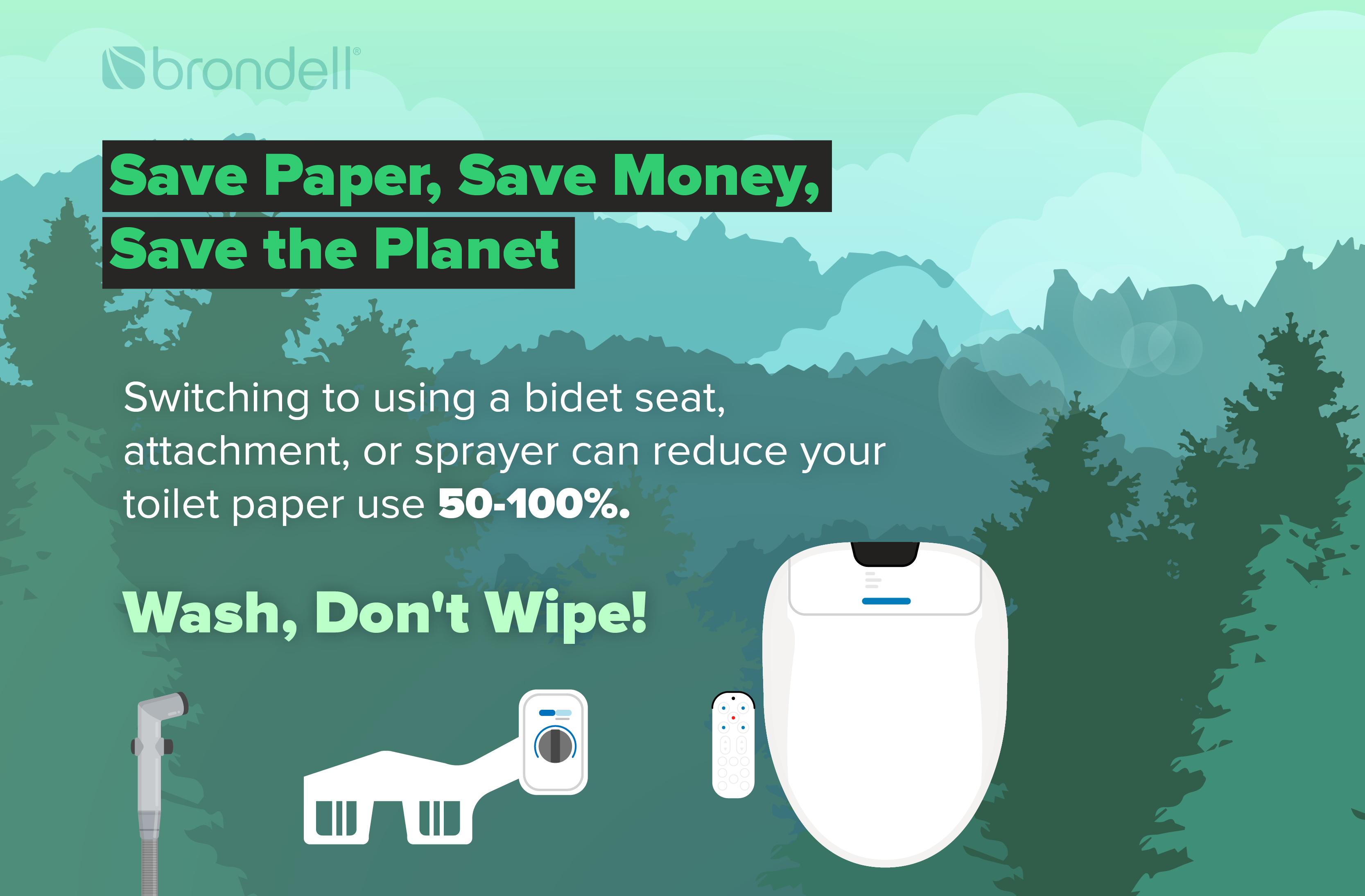
If you’re at all eco-conscious, you’ve probably changed some of your behaviors to help save paper. Trees are pretty important, after all! Our old-growth forests are a precious natural resource that needs to be protected. Maybe you print fewer emails, write on both sides of scrap paper, and recycle all the paper you can.
But what are you doing about all the paper you’re flushing down the toilet?

A little staggering, huh? Though it’s easy to forget about the lowly roll of bathroom tissue, toilet paper is a huge industry. Your two-roll-a-week habit supports an industry worth $30 billion worldwide. And all those quadruple-ply, extra-fluffy, cottony-soft toilet paper rolls come at a huge cost not just to your wallet (Americans alone spend about $8 billion a year), but also to the environment.
For starters, using toilet paper is bad for the environment because it is a single-use paper product. The environmental impact of toilet paper gets even worse when you look at how toilet paper is manufactured.
Toilet paper manufacturing is a shockingly wasteful process. There’s the old-growth forests that are cut down, the water wasted to clean and prepare the pulp, and the energy costs of manufacture and transportation. A variety of chemicals are also involved in the manufacturing process, contributing to toilet paper’s negative environmental impact. Chlorine bleaches the pulp white and makes toilet paper feel softer. It also severely pollutes local water sources.

While the paper industry does try to offset some of its waste by planting new trees, this is often in the form of monoculture plantations. These energy-intensive plantations are usually made up of a single species of tree. They’re inadequate substitutes for the biodiverse forests they replace, and they displace native plants and animals.
Toilet paper made from recycled fibers is an option, but the roughness of recycled toilet paper leaves a lot to be desired. Our need for soft toilet paper only encourages the paper industry’s deforestation. As this New York Times article notes, “it is the fiber taken from standing trees that help give it that plush feel.”
Even if you’re willing to give up your extra-soft toilet paper, you may be exposing your delicate nether regions to endocrine disruptors. BPA has been detected at higher levels in recycled toilet paper. This is likely because the recycled pulp comes from paper products that included BPA in the printing process.
It may seem like we’re at an impasse: virgin paper is bad for the environment, but recycled toilet paper is bad for our bodies. So let’s take a step back. Even the softest toilet paper can feel uncomfortable on delicate skin. Plus, toilet paper is ineffective – you’re just smearing the mess around! Want an alternative to toilet paper? When it comes to both your body and the environment, bidets are better than toilet paper. Using a bidet is environmentally friendly, not to mention more comfortable and effective.

Bidet are popular in many countries already, but the United States has been slow to adopt them. However, as more people start learning about how bad TP is for the environment, bidets are seen as a great alternative to toilet paper!
A bidet’s water use is minimal, especially compared to the water wasted to produce toilet paper. If you’re concerned about electricity use, non-electric bidet attachments and sprayers are the ultimate eco-friendly bidet options. Most electronic bidet toilet seats do come with “eco mode” settings, too. This keeps energy consumption at a bare minimum when the bidet isn’t in use.
What about drying off? For those who want a bidet to replace toilet paper completely, a designated towel or cloth toilet paper is an easy solution. It’s like drying off after a shower. Yes, cloth toilet paper has been contentious, but coupling it with a bidet is a more hygienic way to stop using toilet paper. Another way to go TP-free is with warm air dryers, which are built into some electronic bidet seats. If these toilet paper alternatives aren’t your speed, using a square or two of toilet paper is all you really need to dry yourself after using a bidet. You’ll still be significantly reducing your TP use, even if you’re not replacing toilet paper entirely.
For both your own health and the health of the environment, it’s time to make the switch from wiping to washing. You’ll feel good about the environmental benefit of bidets, and your wallet will feel good about buying fewer dead trees. And let’s not forget how good your butt will feel when you stop wiping it with scratchy, wasteful, dry toilet paper!
---
A postscript on wet wipes: Wet wipes are often presented as an alternative to bidets. While wet wipes may clean better than dry paper, they’re still a wasteful and harmful single-use product. Wet wipes are not biodegradable because most are made from plastic. In recent years, giant masses of wet wipes and grease (dubbed “fatbergs”) have formed, causing severe sewer problems. If you’re looking to change your bathroom habits, bidets are environmentally friendly; wet wipes are not.
